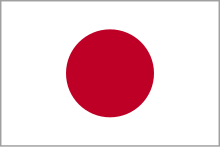

 | This is the user sandboxofFmt2176. A user sandbox is a subpage of the user's user page. It serves as a testing spot and page development space for the user and is not an encyclopedia article. Create or edit your own sandbox here. Other sandboxes: Main sandbox | Template sandbox Finished writing a draft article? Are you ready to request review of it by an experienced editor for possible inclusion in Wikipedia? Submit your draft for review! |
Omiyage (お土産) is a Japanese phrase that describes presents or keepsakes that are presented to friends, family, and coworkers after a journey. These gifts are presented as a show of appreciation and consideration and are usually a representation of the area visited. This cultural tradition is deeply ingrained in Japanese etiquette and customs and holds great social and symbolic significance in Japan.
Omiyage has a rich historical background that spans several centuries. There aren't many details about where the practice came from, but the practice most likely developed over several generations as a social norm and manner.

Omiyage originated in Japan during the Edo era(1603–1868), when it was common for visitors to return from their travels with presents for their loved ones. Gift-giving was a means to share experiences and express gratitude to those who had stayed behind during this time of difficult and expensive travel. People made holy trips to Ise Grand Shrine during the Edo period, but due to its difficulty, villages would choose a person to represent everyone. Money is raised for this individual to go on their journey and pray for the village. In return,'miyage’ is brought back in the form of paper amulets as a keepsake from the shrine. As more people did this, shops around Ise Grand Shrine started to sell goods made in the area. [1]
During the Meiji era(1868–1922), Japan opened to the outside world and internal travel increased in popularity. This introduced the modern concept of omiyage, as the practice became more common.
The Showa era (1926–1989) saw a rise in the popularity of the gift exchange as transportation advancements made travel more accessible to a wider range of people.

In modern Japan, the tradition of presenting omiyage is still common and may be seen in a variety of settings, including personal travel, business trips, and special occasions like weddings and holidays.[2]
Omiyage has also become commercialized in Japan, with souvenir shops and specialized stores catering to both local and foreign travelers looking for authentic regional items. Japanese tourists often bring omiyage gifts to friends and acquaintances outside of Japan, which helps spread knowledge of Japanese culture and traditions. [3]
The different kinds of omiyage[4] exchanged can vary based on the location of Japan and the traditions that go along with it. Some locations have earned a reputation for specialized omiyage goods, luring tourists, and visitors eager to buy these mementos. This directly helps the locals and the promotion of local products.
Omiyage is a big part of what keeps the economies of tourist spots going. Specialty food shops, art stores, and trinket shops in a destination all benefit from the demand for omiyage items from tourists who want to buy gifts to send back home. This can help with job creation and economic growth in these areas.
There are a few conventions and etiquette in Japanese culture that govern giving and receiving omiyage. When offering omiyage, presentation is key. Gifts are generally neatly wrapped or packaged. They are then presented in decorative boxes or packaging that represents the region's culture. The act of offering the gift with dignity and humility is equally important. Each region or city frequently has its own characteristic omiyage[5] goods, including popular sweets, snacks, or handmade crafts. This is also known as Meibutsu.[6]
The gifts are symbolic of the place or location visited by the tourist. These might be local foods, snacks, beverages, or crafts that are distinctive to that place. Travelers typically ask friends or family members if there is something special they would want from the place. It is about more than simply the present itself; it is also about the thought and attention that went into its selection. Travelers spend time choosing omiyage[7] items that they believe the recipients will appreciate.
When delivering omiyage, it is important to provide high-quality presents with thorough deliberation, reflecting the recipient's interests and preferences. Similarly, receivers are expected to demonstrate thanks and appreciation for the gesture, sometimes with a polite acknowledgement or a promise to return the favor with future gifts.
Omiyage is more than just a gift-giving tradition; it reflects Japanese ideals including mindfulness, kindness, and the significance of social harmony. It helps people feel more connected to each other and builds a sense of duty and reciprocity in relationships. Omiyage[8] represents the Japanese value of hospitality, known as "omotenashi." [9]. Exchanging messages allows people to establish social relationships, show thanks, and foster friendliness within their personal and professional networks, all of which contribute to a sense of community and connection.